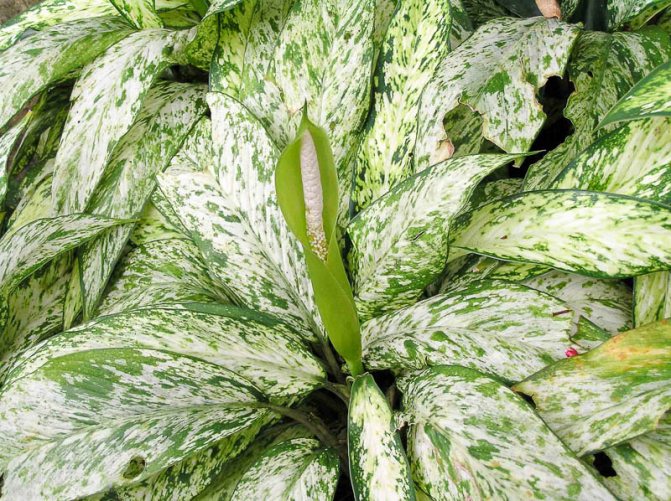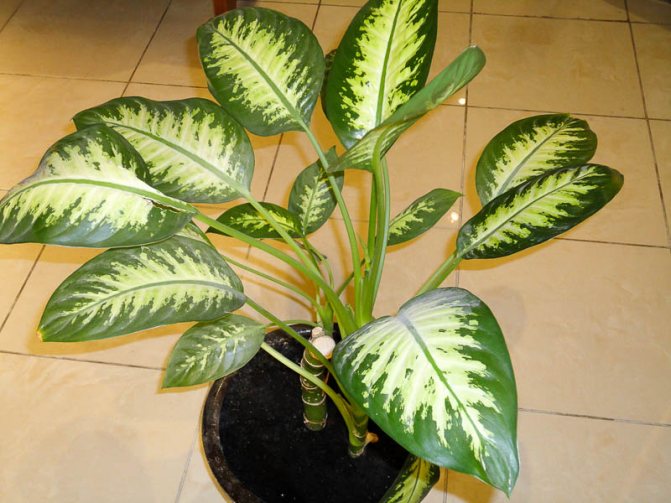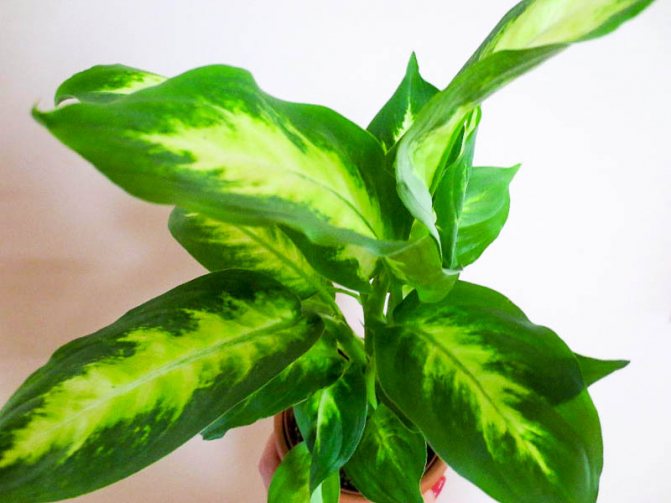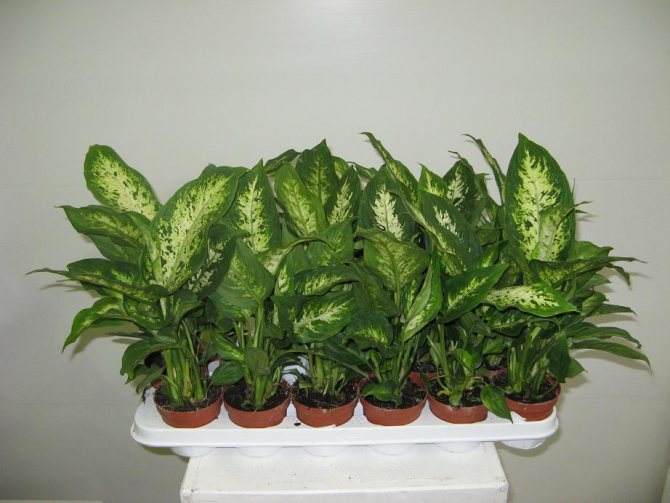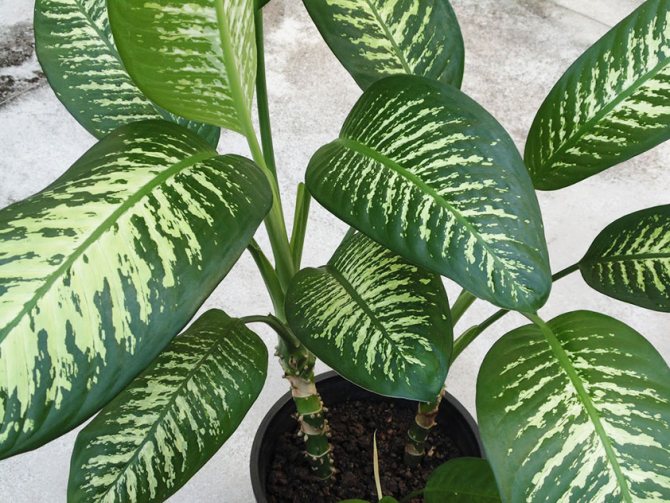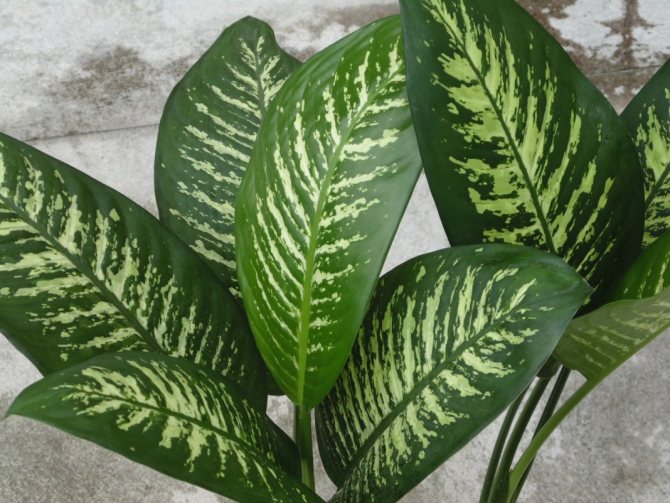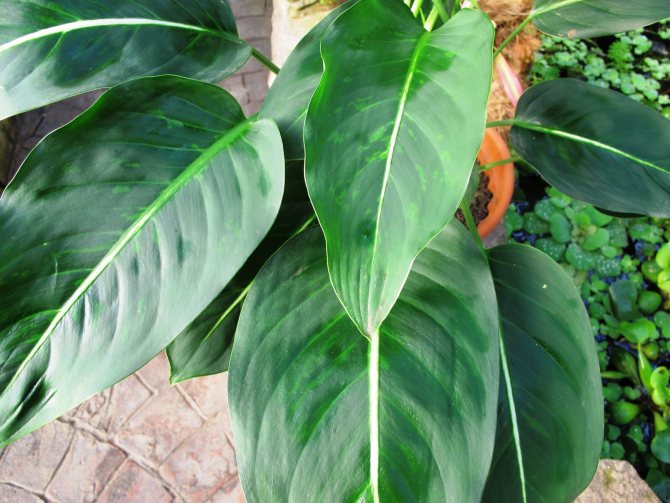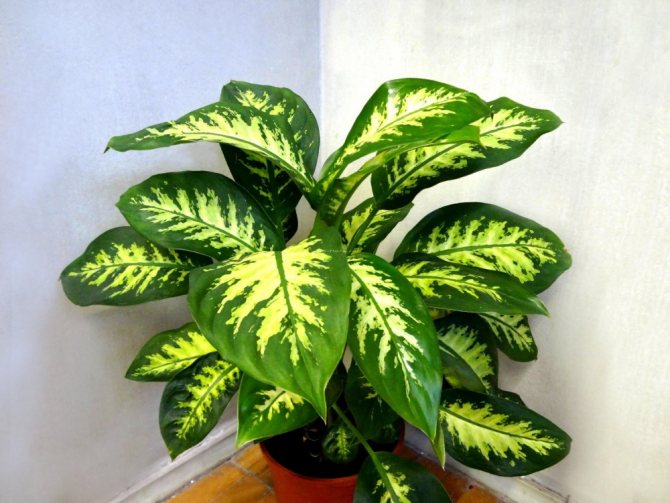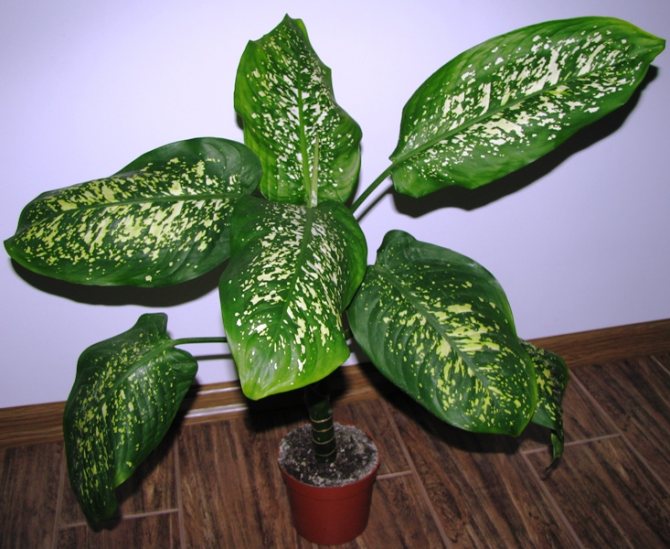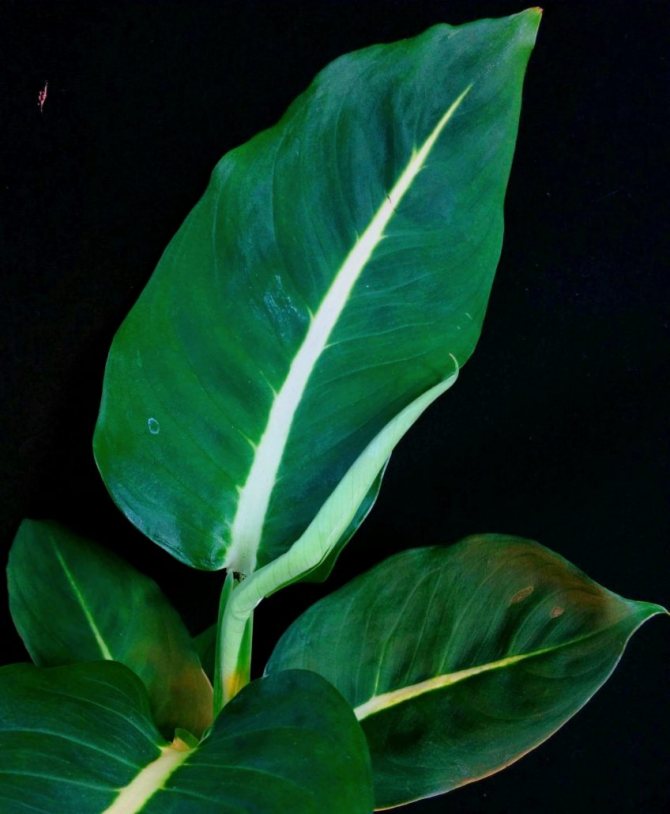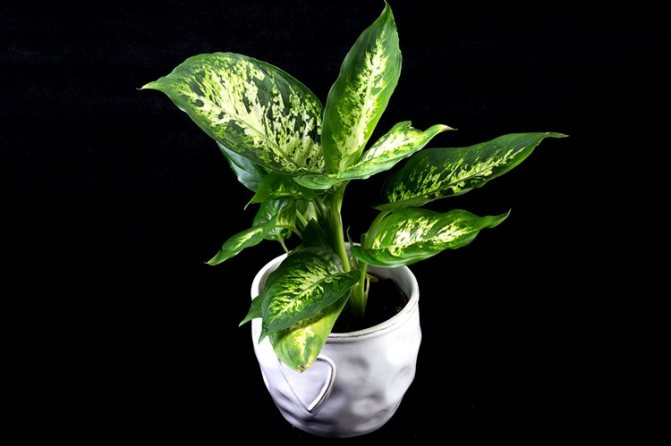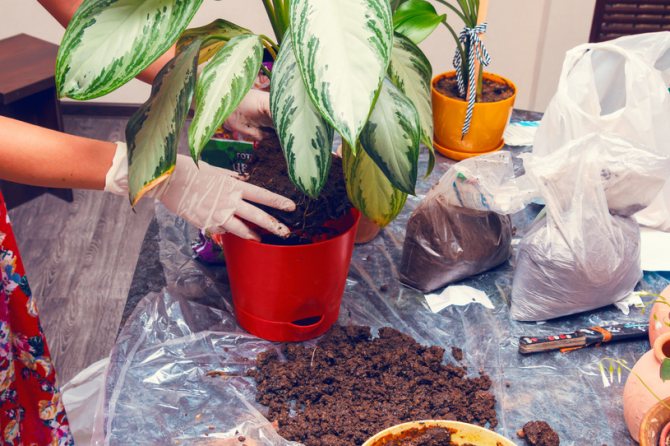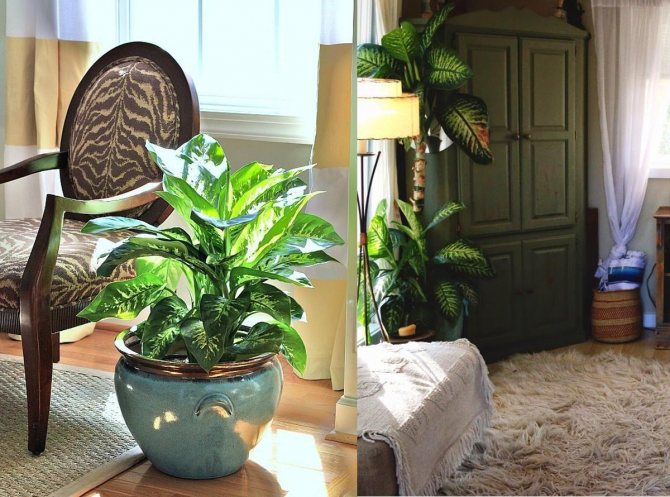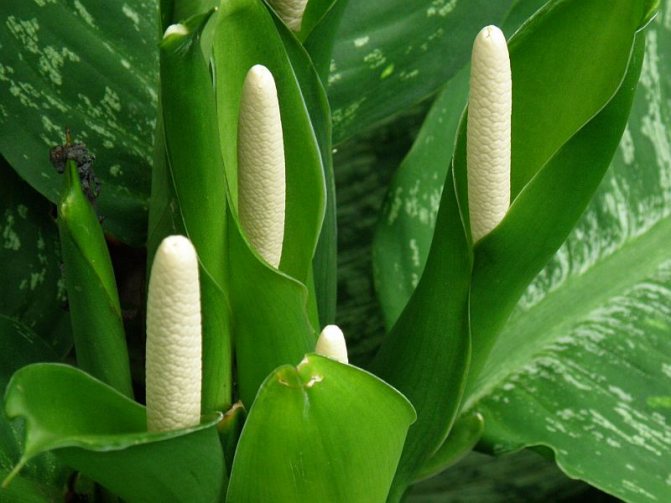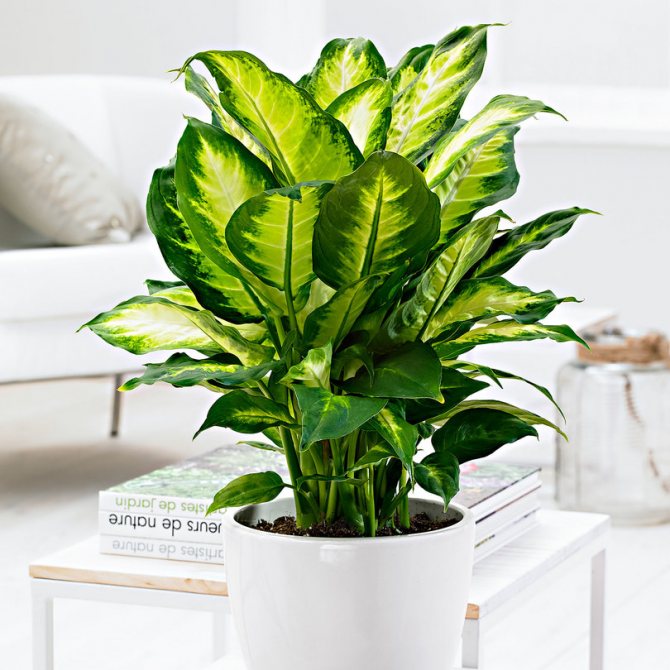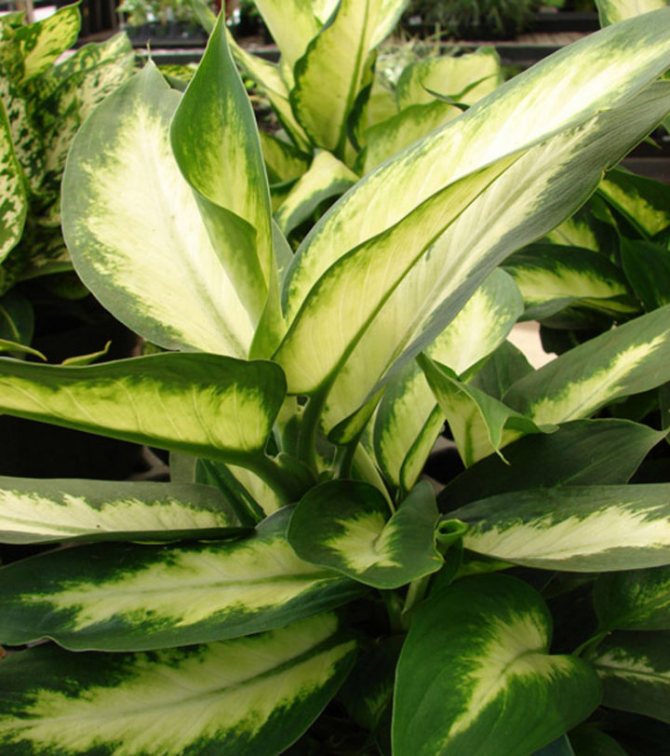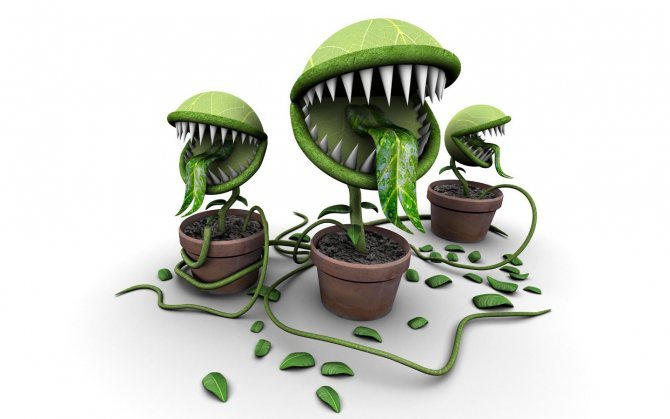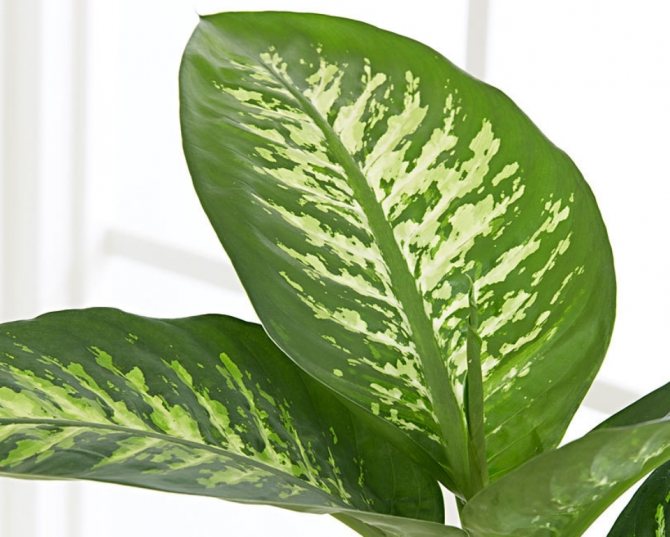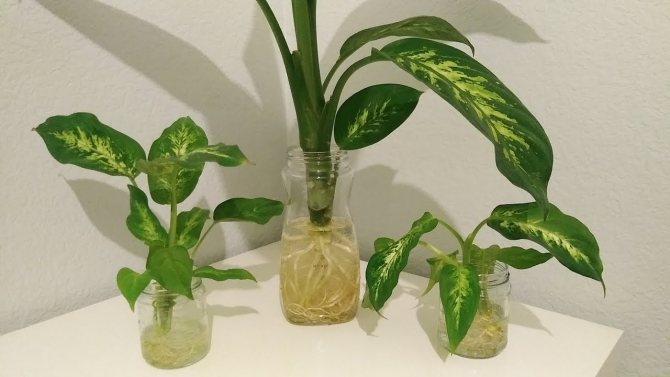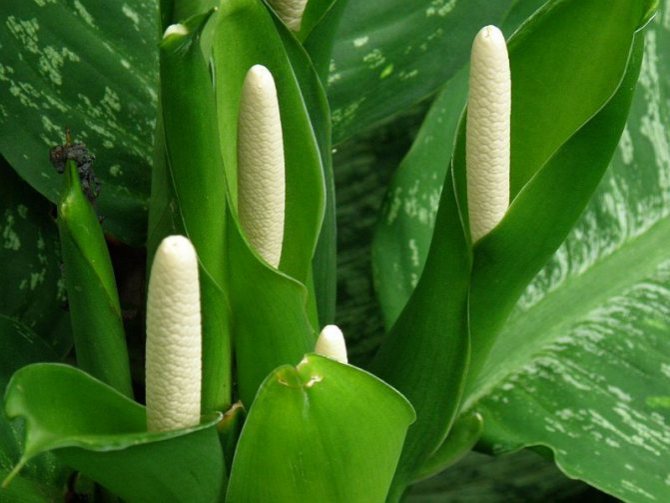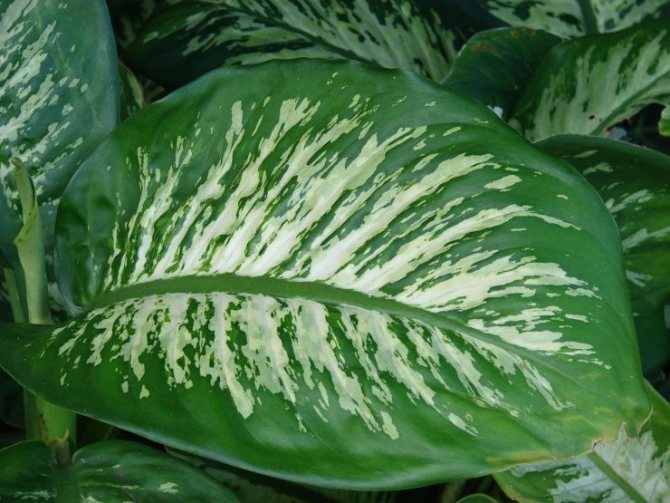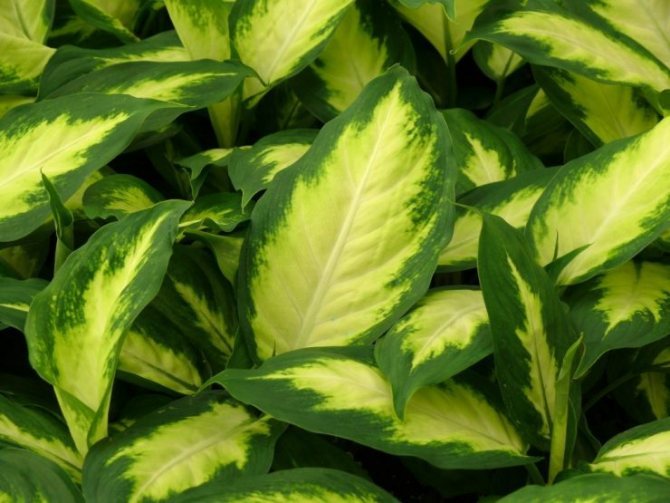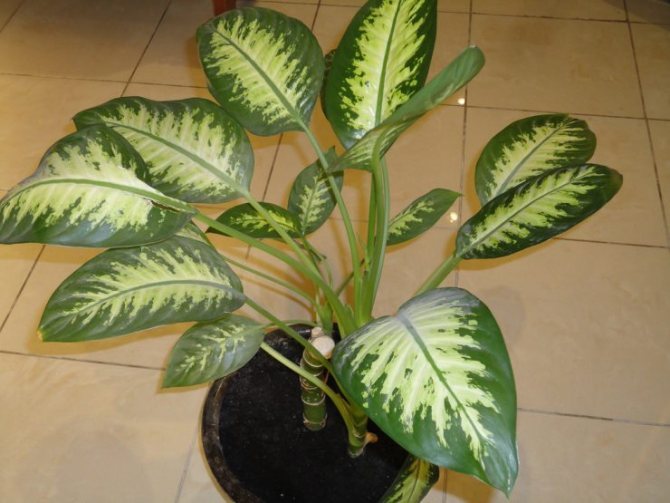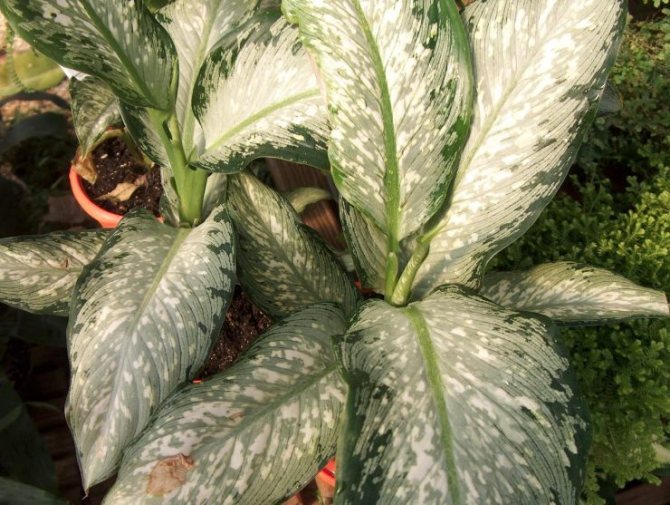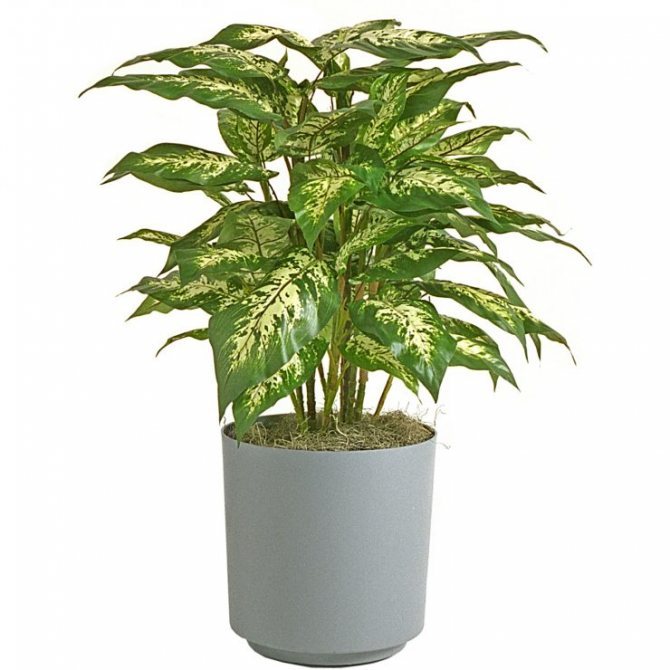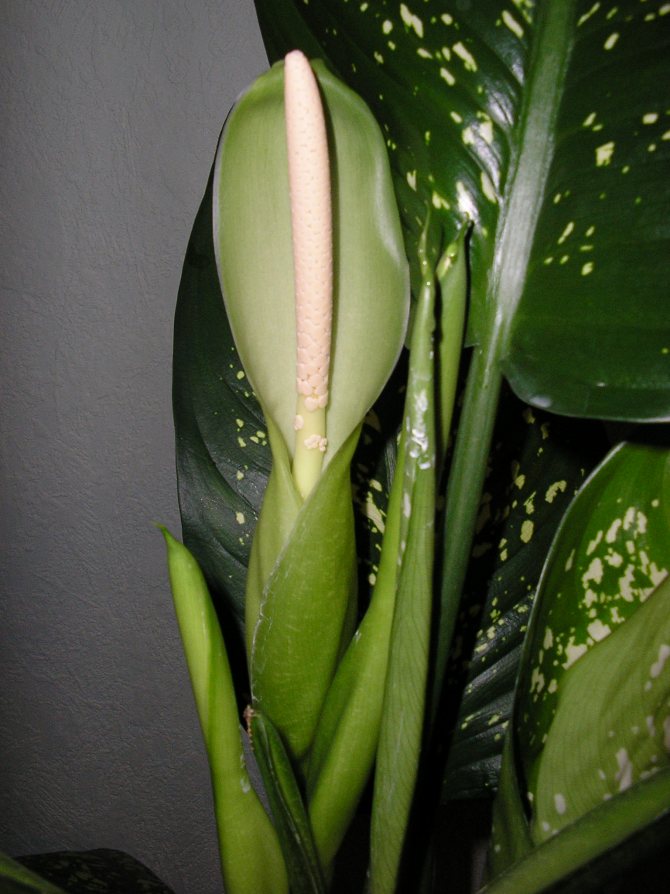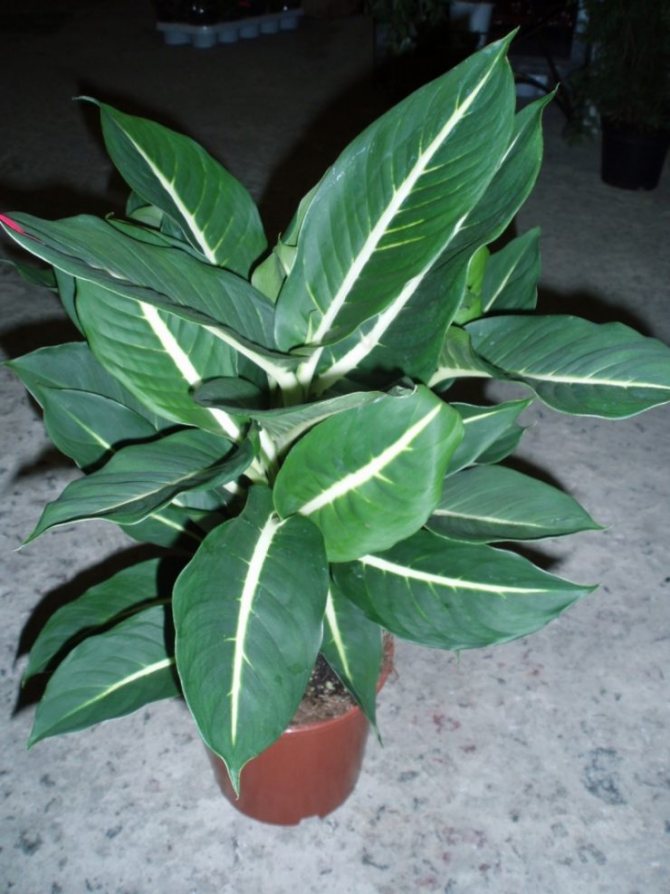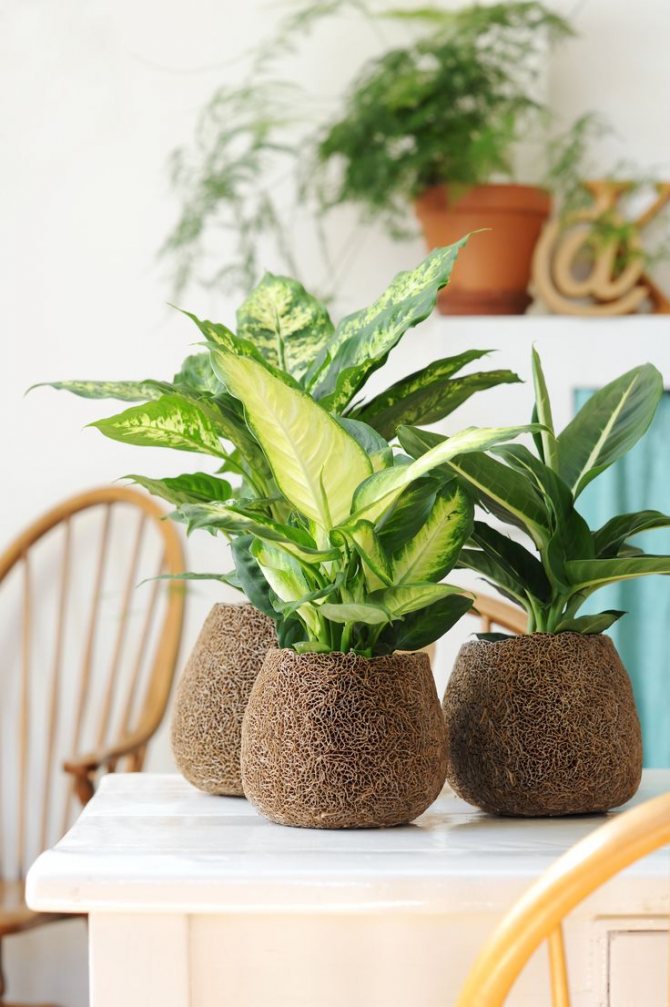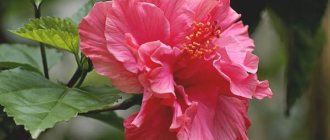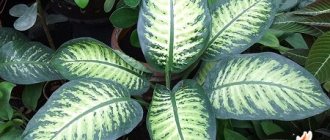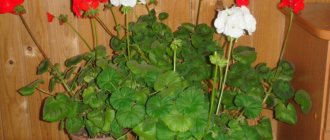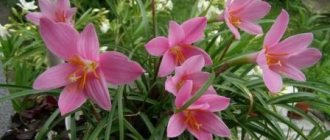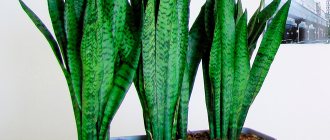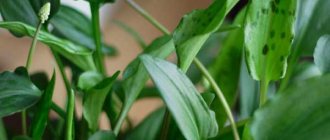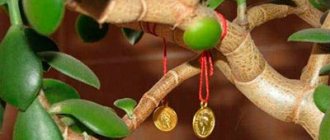Dieffenbachia is a fairly popular plant in our country, however, any experienced florist can name at least one reason why this plant cannot be kept at home. The most compelling reason for rejecting a flower is the toxicity of the sap secreted by this plant. A large number of cases of poisoning are known. They were mainly recorded in children and animals that tried to chew on a leaf of a poisonous flower. In adults, allergies most often occur as a result of contact of the juice with the skin.
In addition to toxicity, Dieffenbachia can "boast" of a lot of signs and superstitions that put it in a negative light. It should be noted that there are a couple of positive signs, but they do not relate to the content of the flower in the house. Despite all this, Dieffenbachia does not lose its popularity and continues to decorate the apartments of many lovers of decorative species.
Useful properties of the widow's flower
Dieffenbachia is an ornamental houseplant of the aroid family. The flower is also called muzhegon or widow's flower. The appearance and size are due to their natural habitats. The peculiarities of the American tropics allow only plants with large leaves and gigantic growth to survive. Indoors, the flower does not fight for moisture, as in natural growing conditions, extracting it by collecting leaves.
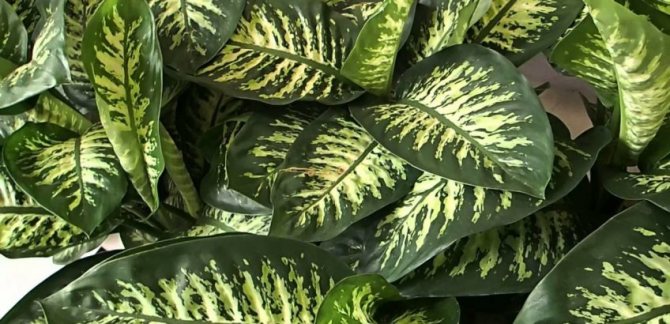
Beneficial features:
- Humidifies the air. Especially important during the heating season. In the presence of one or two adult plants, it is much easier to breathe in winter, which is very important for children with allergies.
- Cleans the air. Relieves human lungs from the consumption of substances such as benzene, xylene, formaldehyde. Those who live near a motorway or an industrial plant definitely need dieffenbachia in their bedroom, nursery, or kitchen!
- Eliminates harmful bacteria from the indoor atmosphere. The likelihood of illness during outbreaks of viruses and influenza is reduced to minimal levels.
Is dieffenbachia poisonous
With such useful properties, the question arises why the plant is treated with caution. The flower gives negative qualities to the juice, which contains calcium oxalate crystals, which have a needle-like shape and cause a burn of the larynx from the oral mucosa.
But in order for the plant to cause harm, you need to eat it. This cannot be explained to animals and children who often taste the leaves. Unpleasant taste and sensations stop the meal before irreparable damage is done to the health of the "vegetarian". The effect of the juice occurs in 20-30 seconds. If a large number of leaves are eaten during this time, a burn of the esophagus occurs.
The juice is dangerous for humans when transplanting a plant. Gloves should be used to prevent skin burns. Once upon a time, American planters used the irritating properties of sap to raise rebellious slaves. The plant was used instead of whips. The offenders were beaten with leaves on their bare backs or forced to chew them in order to prevent eating and talking due to swelling of the larynx.
Scheme of action in case of poisoning:
- Drink plenty of warm water, milk or potassium permanganate solution.
- Adoption of a sorbent that neutralizes and removes harmful substances from the body.
- A visit to a doctor to exclude the development of complications.
Signs and superstitions
Poisonous sap is not the only thing that makes people afraid of the presence of a plant in the house. There are conflicting beliefs and omens about him. Dieffenbachia causes controversy between botanists and esotericists. In each camp there are both admirers and opponents of the flower.
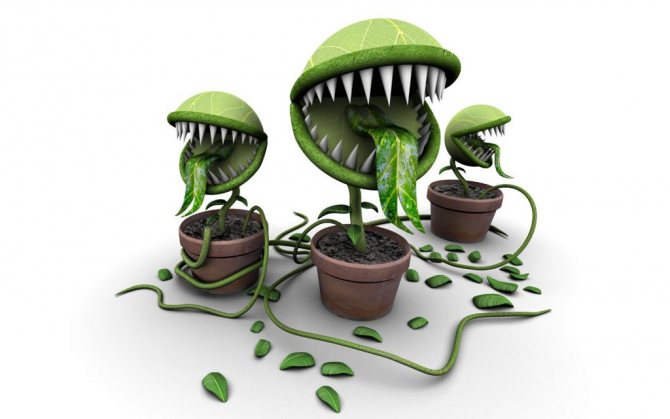

Negative omens about dieffenbachia
- Widow flower is the popular name for the plant. Unmarried owners pretend to be old maidens. Married couples, having acquired dieffenbachia, begin to quarrel, scandalize, get divorced.
- Muzhegon is another popular name for the plant. Reduces male energy, taking it away from the owner, which causes poor health, health and mental problems.
- Childlessness can also be the reason for having such a beautiful flower in the house with positive air-purifying qualities. If you believe the signs, it is dieffenbachia that prevents the appearance of offspring.
- Financial problems are another nuisance that dieffenbachia can organize. Its energy is capable of growing not only large green leaves, but also a heap of problems - from demotion to dismissal, from debt to bankruptcy.
- A plant in a dwelling can cause the care or death of pets.
Good omens
- Loves female energy. Caring for a flower according to all the rules allows its owner to count on the preservation of youth and beauty.
- Filling the house with positive energy. Every morning all family members receive their positive charge, attracting success and well-being. It is enough just to walk past the flower, doing your usual business or getting ready for work, school or garden.
- The condition of the plant can warn of future events. Sharply wilted - to a disease, dull color of the leaves - drying out of feelings between lovers and parting.
- Dieffenbachia knows how to prompt people to make the right decisions in any business. She changes her outlook, reconfiguring in a positive way. Confronting enemies always ends in victory!
The contradiction of bad omens with good ones confirms only the fact that everyone has what they believe in. If the flower is already endowed with such a strong energy, it is better to learn how to use it for good, as well as positive cleansing properties with visual appeal.
What types are there?
Dieffenbachia has large, beautifully colored leaves, but nondescript flowers. As a result of the work of breeders, more than 40 varieties of this houseplant have been obtained. The most common of them are:
- Camilla is a hybrid with a light lemon color of leaves in the central part with a dark border around the edges;
- Bauze - no more than 90 cm high, with a marble pattern on large yellow-green leaves;
- Bowman - with large oval leaves reaching a length of 75 cm, with a light line in their middle part and small specks extending from it;
- dieffenbachia spotted - with a pattern on pointed leaves, over the entire surface of which ivory-colored spots and specks are scattered;
- Oersteda, which differs from other plant species in solid dark green leaves with a wide light vein in its center;
- Adorable (Seguina), distinguished by a herringbone pattern in a contrasting color on the leaves;
- Green Magic - a hybrid with an even dark green color of the leaf, giving a blue, with a white central stripe and light rays emanating from it;
- Compact is a miniature plant variety that has many similarities to Camila;
- Reflector, the memorable color of the leaves of which is presented in the form of yellowish spots along the lateral veins on a dark surface;
- Mars, on the large leaves of which there are many small strokes of light, merging into a solid background.
All types of dieffenbachia are divided into 2 groups: bush and tree-like. Arborescents have one strong stem. Shrub plants are characterized by the presence of several stems and outwardly resemble a lush bush.
Read more about the varieties here.
Why dieffenbachia blooms
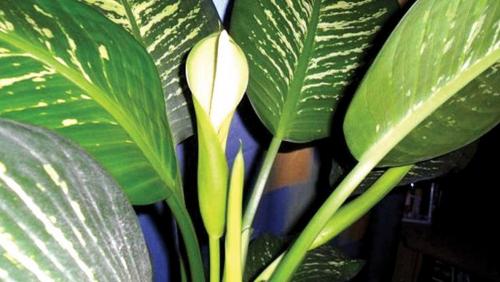

Flowering is a rare occurrence in this plant. It was also overgrown with folk signs. The main thing is a warning. Signals about imminent negative events or problems associated with men in the family.
Blooming Dieffenbachia symbolizes change. All that needs to be done at this moment is to prepare mentally for the blows or twists and turns of fate, which will be resolved faster if the matter is approached calmly and carefully.
Let's summarize
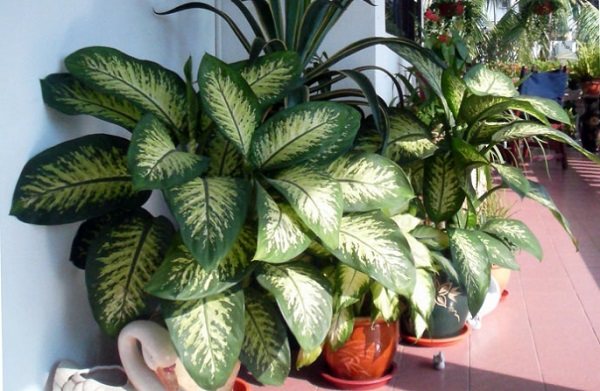

- Dieffenbachia - a pot of poisonous juice. Thanks to this, more negative than positive signs have been created around him.
- The plant is considered a muzhegon, therefore it is contraindicated for both single girls (will not marry) and “ringed” ladies (they will have problems with their spouse). And the blooming of the flowerpot suggests that the "clouds" of negative energy are very "low" gathered over your family, and a "thunderstorm" is about to break out,
- But this plant has a great effect on eloquence, efficiency and ambition. Therefore, dieffenbachia is not only possible, but also needs to be kept at your workplace or office.
This video will tell you about other indoor flowerpots. Moreover, you will learn not only the signs concerning flowers, but also the magical properties of many popular plants:
When using materials, a link to the source is required.
Where to put a flower in the house
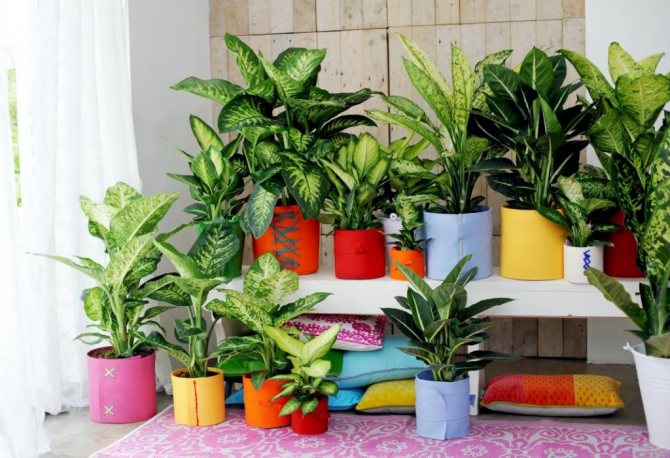

Dieffenbachia can be kept at home if a number of conditions are met. If there are other flowers in the dwelling, this one is settled in a separate room so that its energy and inventive leaves do not destroy competing plants.
It is better not to have it in the bedroom so that it does not contribute to the occurrence of quarrels and conflicts. The best place in the house is the kitchen. This room is saturated with the feminine energy that the flower loves so much. Having received enough "food", the plant will not be "naughty", but only please with beauty and positive energy.
Dieffenbachia cleans the space well from negativity. If you put a flower in an unfavorable zone, then it will constantly be busy absorbing streams of negative energy.
Where else can dieffenbachia take root? In a study or study room. By enhancing business acumen, helping to solve problems, the flower will contribute to better things in work and learning.
Observing these recommendations, you can safely bring dieffenbachia into the house. A bright, colorful, unusual flower will decorate any room, filling it with freshness and green colors! The main thing is to remember that he must have his right place, which will make him work for the good, and not damage the homeowners.
The benefits of the plant


Dieffenbachia is considered a pronounced energetically negative plant, because it can both detect negative energy and absorb it.
Esotericists believe that this plant blooms only in places where a strong emotional background is concentrated. This quality can be used for good. Dieffenbachia should be marked where domestic quarrels and scandals often occur.
The plant will absorb most of the background, prevent it from settling in the apartment and harm the household. A good place for a poisonous flower, for example, in the kitchen, where spouses often quarrel. Despite its notoriety, it is a plant with a strong feminine energy, capable of sharing it with those who care for it. This flower is recommended exclusively for women.
With the right approach, contact with a dangerous plant will do good, improve the appearance of its mistress, help her lose weight, and normalize her well-being. When caring for a plant, it is important to pay special attention to the leaves.
Dieffenbachia - care
A tropical plant requires special living conditions. The most important marker is high air humidity. The dryness kills the flower, causing the leaves to turn yellow and dry out.
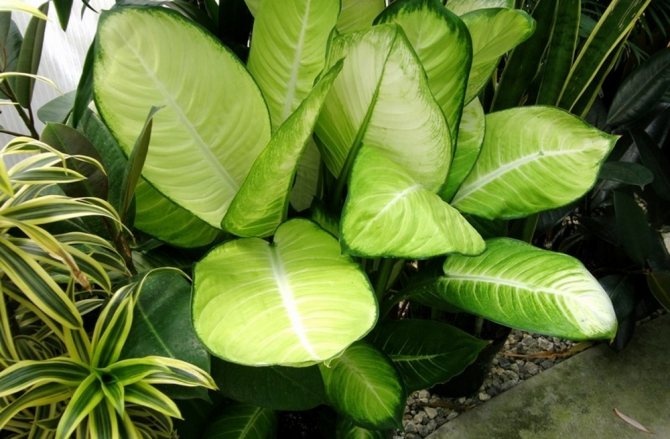

The optimum air temperature is 20-25 ° C. The same is considered the most comfortable for a person.
Leaves require special care.As it gets dirty, the surface is cleaned with a cloth soaked in boiled water. Spraying from a spray bottle is carried out every few days.
The flower needs abundant watering. Important! The soil should dry out. Overdrying the substrate is destructive, as is waterlogging. Leaving for a long time, the flower must be entrusted to neighbors or friends. Lack of long-term care is like death.
Basic rules for dieffenbachia care:
- Lighting... Bright diffused light without direct sunlight. If there are blinds on the windows, either side will do. In dark rooms, additional artificial lighting will be required.
- Air temperature... In summer, up to 30 degrees. In winter - not lower than 16 degrees. The absence of drafts is an important indicator of life!
- Watering. In summer it is plentiful. Moderate in winter. Only boiled or settled water is used.
- Air humidity... From 65%. In summer, the plant can be sprayed, in winter, it can be dried on radiators, especially if the flower is on the windowsill. An ideal support option is a humidifier. Bathing with running water is desirable, provided that no water gets into the pot.
- Top dressing. Regular - once every one to two months. Important! The fertilizer should be free of lime. The amount of solution should be half the manufacturer's recommended rate.
- Transplant during the spring - from March to May.
- Pests. The flower suffers from the abundant attention of aphids, scale insects, thrips, spider mites, mealybugs.


